One of the most revered manifestations of Vishnu, Shri Ram, is a prominent figure in Hinduism and is thought to be the seventh avatar. He plays a pivotal role in the ancient Hindu epic Ramayana, which recounts his life and acts of heroism. Additionally, he is held in high esteem as a model of chivalry, virtue, and dharma.
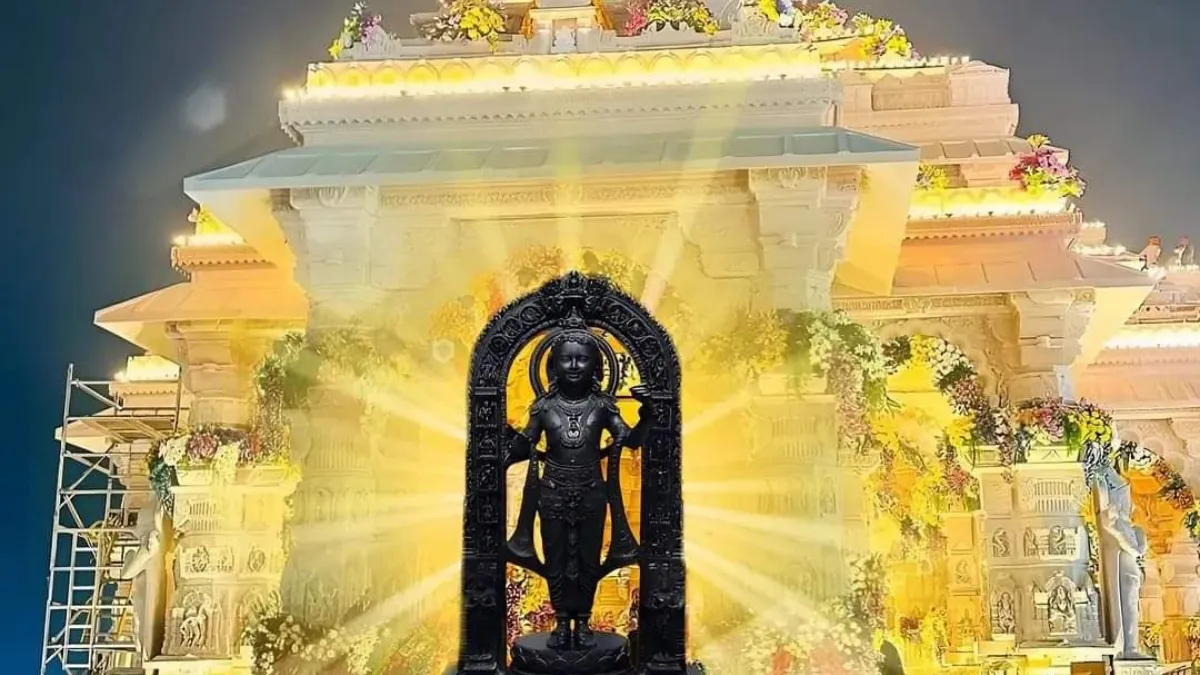
Millions of worshippers, primarily from the Vaishnav and Ramanandi sects, worship Shri Ram all across the globe, but notably in India. Jainism, Buddhism, and Sikhism all hold him in high esteem as a virtuous and honorable individual.
On Rama Navami, we celebrate Shri Ram’s birthday; on Diwali, we commemorate his return to Ayodhya following his victory over Ravana. As a kind of prayer and devotion, his followers also repeat his stories and sing his name.
Ram Mandir Pran Pratishtha Time
Between noon and twelve-thirty-five on January 22, 2024, the Shri Ram Janmbhoomi Mandir hosted the Pran Pratishtha ceremony, which officially installed the idol of Lord Ram. When the Abhijeet Muhurat occurred, it was a potent and auspicious moment to conduct rites and rituals.
Ayodhya Ram Mandir Photo
On January 22, 2024, Prime Minister Narendra Modi inaugurated the Ayodhya Ram Mandir, a magnificent temple devoted to Lord Ram. Here are a few images of the temple. The temple now stands where Hindu protesters destroyed the Babri Masjid, a mosque from the 16th century, in 1992. The Nagara style of building is anticipated to give rise to a thousand-year-old temple.
Jai Shree Ram Photo
Jai Shree Ram, which translates to “Hail Lord Ram” or “Victory to Lord Ram,” is a well-known Hindu mantra and salutation. Devotees of Ram, a highly venerated Hindu god and one of the most well-known incarnations of Vishnu, frequently make use of it.
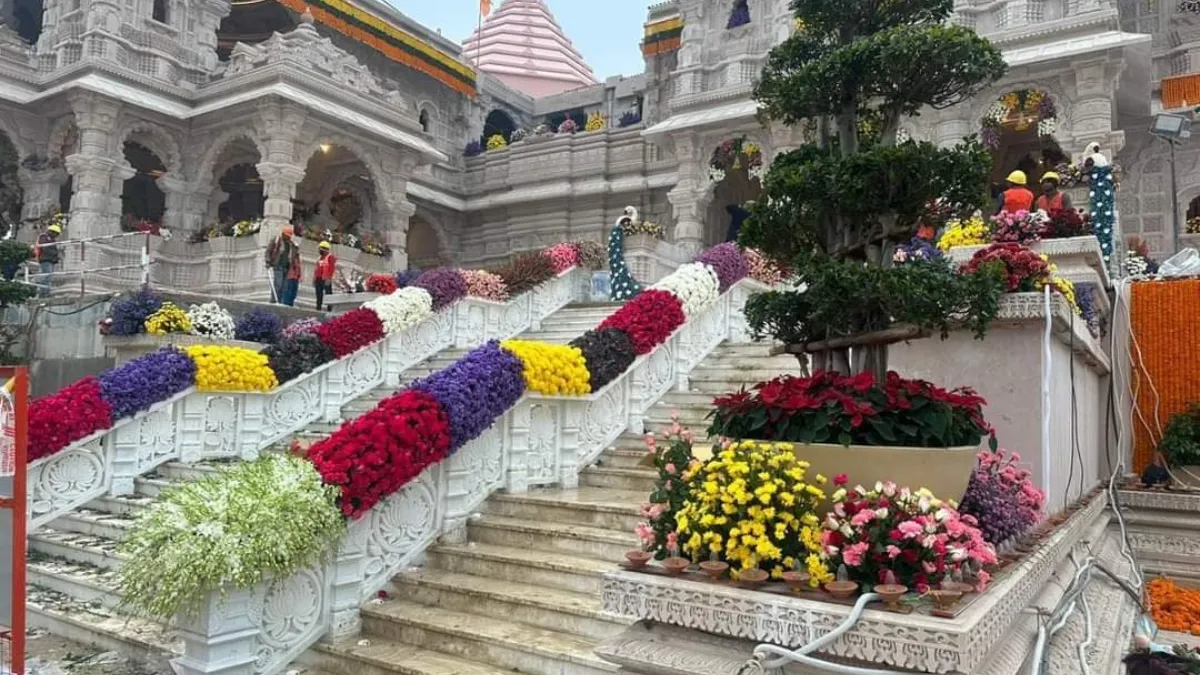
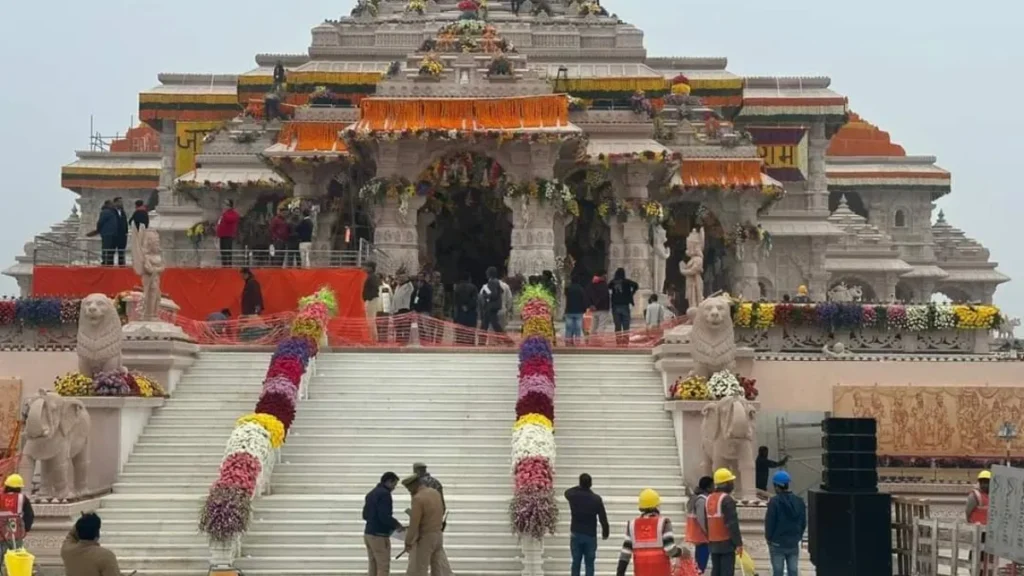
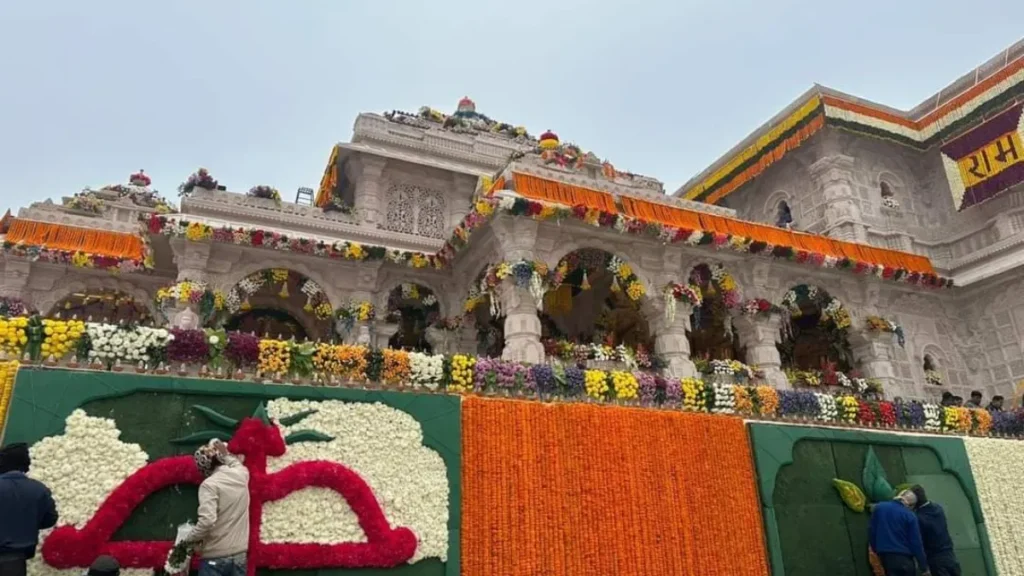
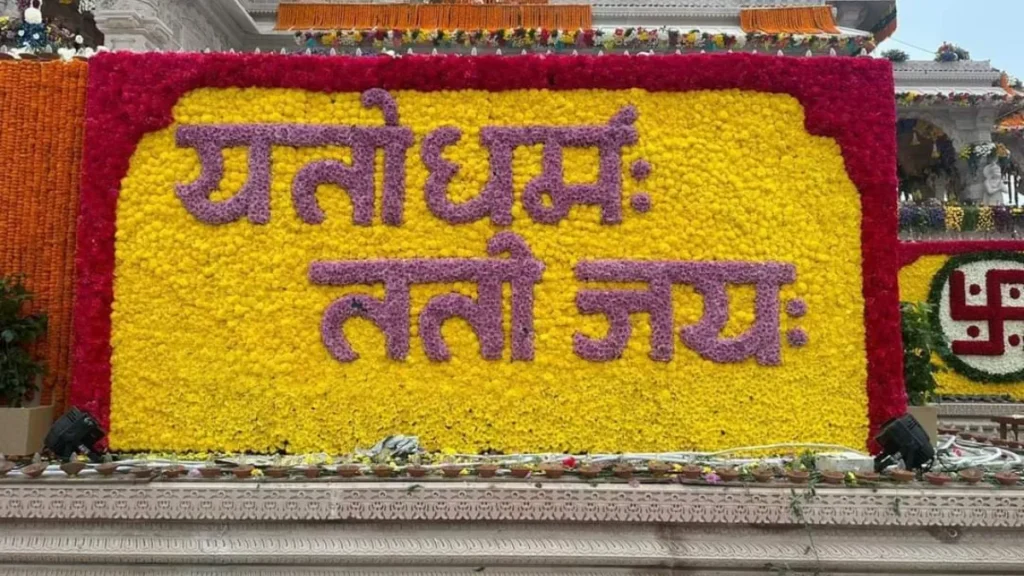
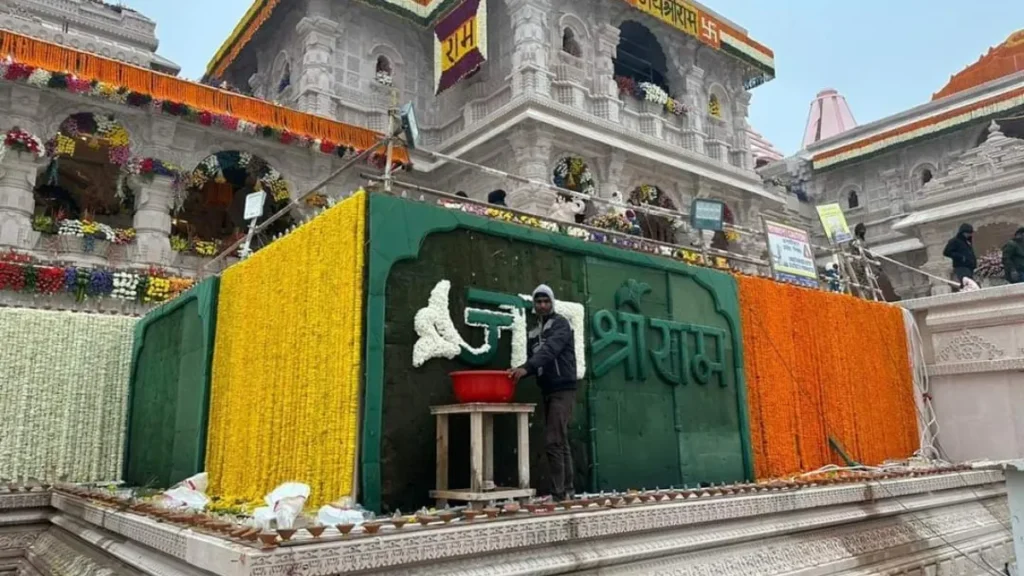
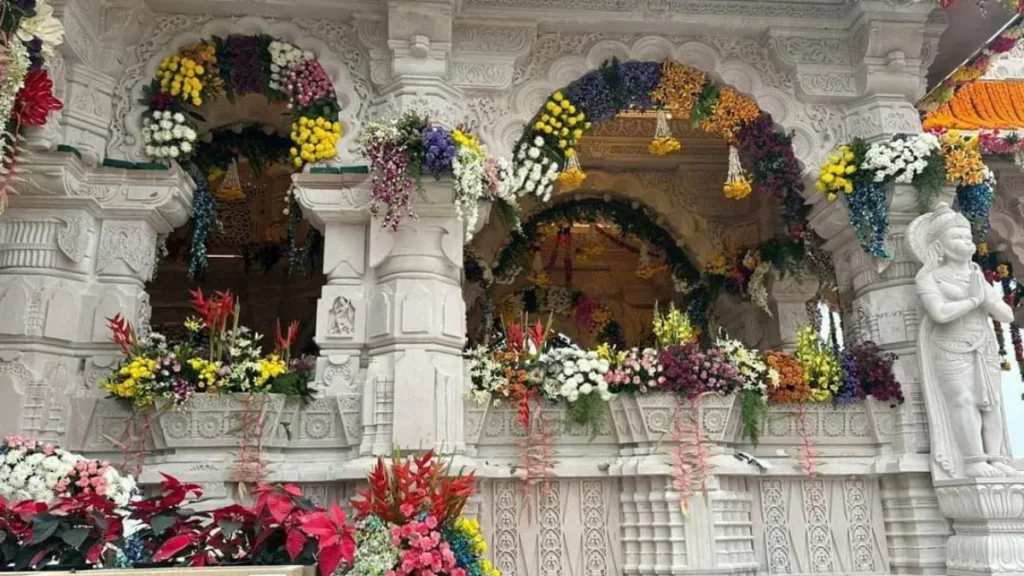
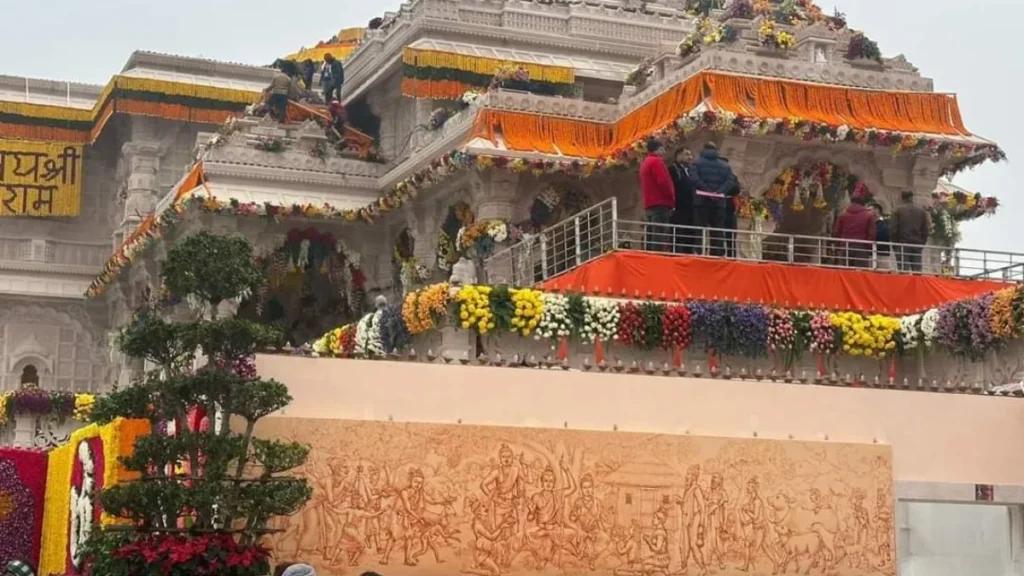
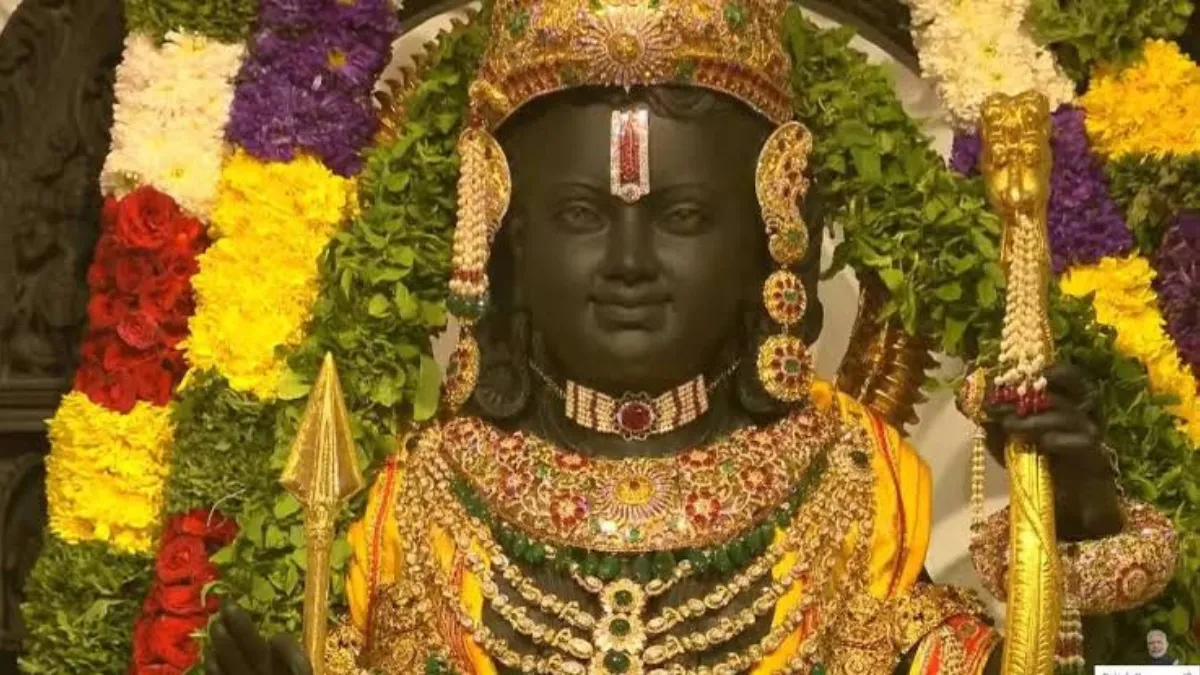
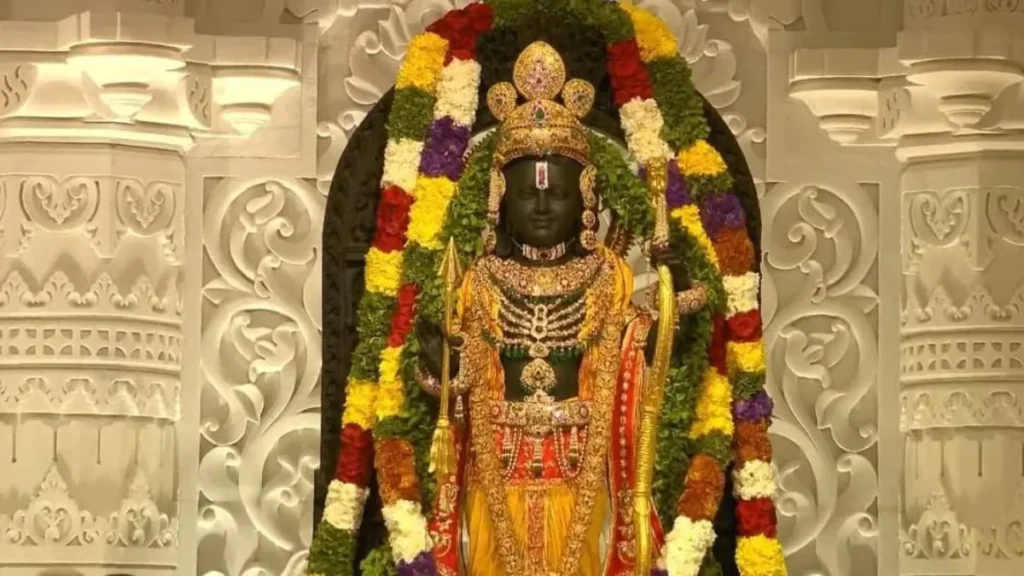
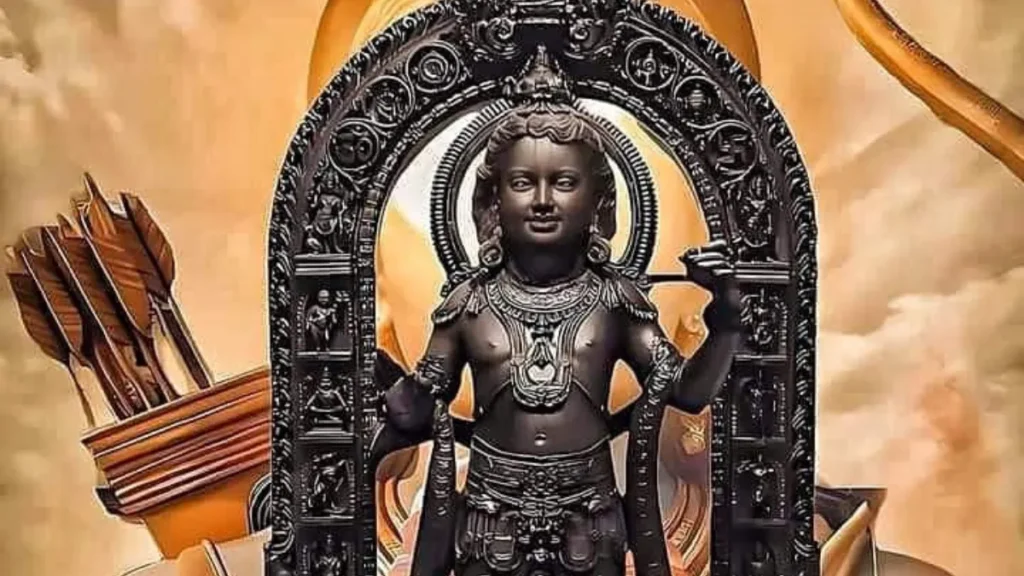
Shri Ram Mandir Ayodhya Live
Shri Ram Mandir Ayodhya: How To Make Online Contribution
In the sacred city of Ayodhya, Uttar Pradesh, stands the Shri Ram Mandir Ayodhya, a temple devoted to Lord Ram. Ram is the seventh avatar of Vishnu. The current shrine stands on top of the rubble of the historic Babri Masjid, which Hindu extremists destroyed in 1992, setting off widespread communal unrest in India. The Supreme Court of India awarded the contested land to the Hindu side in 2019, which paved the way for the construction of the temple. Additionally, the court mandated that the government furnish Muslims with an alternate location to construct a mosque.
The Shri Ram Janmabhoomi Teerth Kshetra Trust, established by the government in 2020, is supervising the construction of the temple. The anticipated cost of the temple renovation is over Rs 1,100 crore, and the trust is seeking donations from individuals all around the world to cover this expense. The trust is also running a national fundraising drive from January 15, 2024, until February 27, 2024.
Online and offline options abound for contributing to the temple’s coffers. Right now, there are a few online options:
The trust’s official website accepts a number of different payment methods, including major credit cards, debit cards, net banking, wallets, and more. When the payment goes through, you’ll get an email with a receipt for your donation.
Use any UPI app—like Google Pay, PhonePe, Paytm, BharatPe, etc.—to scan the QR code or input the trust’s UPI ID to complete the transaction. The following are the trust’s UPI IDs:
shriramjanmbhoomi@sbi and shriramjanmbhoomi@bob. You will receive a confirmation message on your app after the transaction is completed.
You can fund the trust’s bank accounts directly by NEFT, IMPS, or RTGS. Here are the trust’s banking details:
Bank Name – State Bank of India
Account Name – Shri Ram Janmbhoomi Teerth Kshetra Account Number – 39161495808
IFSC – SBIN0002510
Branch – Naya Ghat, Ayodhya, UP
While making the transfer, you’ll have to give your name, address, email, and PAN number. The trust will send you an email with a receipt for your contribution.
The trust’s office is located at Shri Ram Janmbhoomi Teerth Kshetra, PO Box No. 135, Ram Janmbhoomi, Ayodhya, Uttar Pradesh, 224123. You can also send a demand draft or check made out to “Shri Ram Janmbhoomi Teerth Kshetra” to this address. On the other side of the demand draft or check, you must include your full name, mailing address, email, and PAN number. The trust will send you an email with a receipt for your contribution.
To fund the trust’s account, you can use cash at any of the aforementioned branches. To complete the deposit, please include your full name, mailing address, email, and PAN number on the slip. As evidence of your donation, the bank will provide you with a counterfoil.
Donations to the temple can be made by anyone with a non-Indian passport because the trust has been registered under the Foreign Contribution Regulation Act (FCRA) of 2010. This is the name of the trust’s FCRA-designated bank account:
Bank Name – State Bank of India
Account Name – Shri Ram Janmbhoomi Teerth Kshetra
Account Number – 42162875158
IFSC – SBIN0000691
SWIFT – SBININBB104
Branch – New Delhi Main Branch, 4th Floor, FCRA Cell, 11, Sansad Marg, New Delhi – 110001
When you make the transfer, be sure to include your full name, mailing address, email, and passport number. The trust will send you an email with a receipt for your contribution.
Section 80G of the Income Tax Act, 1961, allows, under specific conditions, donors to claim a tax credit for their contributions to the trust. The Central Government has additionally designated the trust as a famous site of public worship and a place of historic significance for the purposes of Section 80G. The exception to this rule is section 80G, which does not apply to monetary contributions exceeding Rs 2,000.
Shri Ram Janmbhoomi Mandir
In Ayodhya, Uttar Pradesh, stands the magnificent Shri Ram Janmbhoomi Mandir, a temple devoted to Ram, the seventh incarnation of Vishnu. It stands where the Babri Masjid once stood, a mosque dating back to the 16th century that was destroyed in 1992 during sectarian riots that rocked India. Hindu mobs carried out the demolition. In 2019, following an extensive legal battle over the land’s ownership, the Supreme Court of India gave its approval for the temple’s building. The Nagara style of building is anticipated to give rise to a thousand-year-old temple.
On a momentous occasion that drew thousands of worshippers and distinguished guests, Prime Minister Narendra Modi inaugurated the temple on January 22, 2024. As part of the traditional Hindu rite of installing the idol of Lord Ram in the temple’s sanctum sanctorum, the ceremony also celebrated that event. As a representation of Hinduism, the temple is anticipated to draw in millions of visitors from all over the world, including pilgrims and tourists.
Who designed the Ayodhya Ram Mandir?
Famous Ahmedabad architect Chandrakant Sompura, who was born into a long line of revered temple builders, was responsible for the design of the Ayodhya Ram Mandir. His two architectural sons, Nikhil and Ashish Sompura, helped him conceptualize the temple’s layout over 30 years ago.
The temple’s construction is characterized by the Nagara architectural style, which has its roots in the fifth century. Among its many features are a grand dome, four smaller domes, and a network of pillars and arches. The pink sandstone and marble temple is adorned with elaborate sculptures and embellishments. The estimated lifespan of the temple is one thousand years.
Who funded the construction of Shri Ram Janmbhoomi Mandir?
The Center established the Shri Ram Janmabhoomi Teerth Kshetra Trust in February 2020 to receive contributions for the construction of the Shri Ram Janmabhoomi Mandir. According to reports, the trust managed to acquire a considerable sum of Rs 3,500 crore to fund the construction and upkeep of the temple. The total cost of constructing the temple was 1,800,000,000 Indian rupees. Beginning on January 14 and running until March 24, the Ramotsav is a 70-day cultural festival that the government has allotted Rs 100 crore to.
Who is the head of Shri Ram Janmabhoomi Teerth Kshetra Trust?
In the Ayodhya dispute, K. Parasaran acted as a counsel for Shri Ram Lalla Virajmaan before the Supreme Court; now, he heads the Shri Ram Janmabhoomi Teerth Kshetra Trust. On February 10, 2020, he was officially named the first trustee of the trust by the federal government. Additionally, he serves as the trust’s acting chairman. He had a successful sixty-year career as a lawyer, and he’s 93 years old. The Padma Vibhushan, India’s second-highest civilian honor, was also bestowed on him.
How many people attended the inauguration ceremony of Shri Ram Janmbhoomi Mandir?
Politicians, actors, renowned businesspeople, and seers were among the over seven thousand guests who graced the opening of Shri Ram Janmbhoomi Mandir. In addition to attending the ceremony and performing the rites of putting the idol of Lord Ram in the temple, Prime Minister Narendra Modi was the event’s principal guest. Live coverage of the ceremony was available in theaters and on the internet in India and around the world.
What is the significance of Ayodhya?
Located in the Indian state of Uttar Pradesh, Ayodhya is a holy city with deep Hindu roots. It is said to be the spot where the legendary Ramayana, which tells the story of the life and exploits of the most adored Hindu god, Lord Ram, was born. Pilgrims travel to Ayodhya to worship Ram and other deities, as it is one of the seven holy towns for Hindus.
As the site of the 16th-century mosque Babri Masjid—which was destroyed in 1992 by Hindu rioters who claimed it was constructed over a Ram temple—Ayodhya has also been a center of political and religious strife. A protracted court battle for land title ensued, and communal rioting and bloodshed broke out across India as a result. The location could be developed into a magnificent Ram temple after the Indian Supreme Court sided with the Hindus in 2019 and authorized its construction. On a momentous occasion that drew thousands of worshippers and distinguished guests, Prime Minister Narendra Modi inaugurated the temple on January 22, 2024.
For this reason, Ayodhya holds great religious, cultural, and ancestral significance for Hindus. It represents the difficulties of secularism and social cohesion in a multicultural and multireligious society, as well as the merging of religion and politics in India.
Ayodhya Ram Mandir Location
In the Indian state of Uttar Pradesh, there is the revered Ayodhya Ram Mandir, a Hindu temple devoted to the Hindu god Ram. Ram Janmabhoomi, the supposed birthplace of Ram, an incarnation of Vishnu and the primary deity of Hinduism, is the location of its construction.
After a protracted political and legal battle over the land’s ownership, Prime Minister Narendra Modi opened the temple on January 22, 2024.
The temple has six smaller shrines surrounding its main shrine in the Nagara architectural style. The grounds of the temple comprise 1.1 ha (2.7 acres), and its height is 49 m (161 ft).
Any mode of transportation, including roads, trains, and planes, can bring you to the temple. Nearby lies the Maharishi Valmiki International Airport, which Modi formally opened in December 2023.